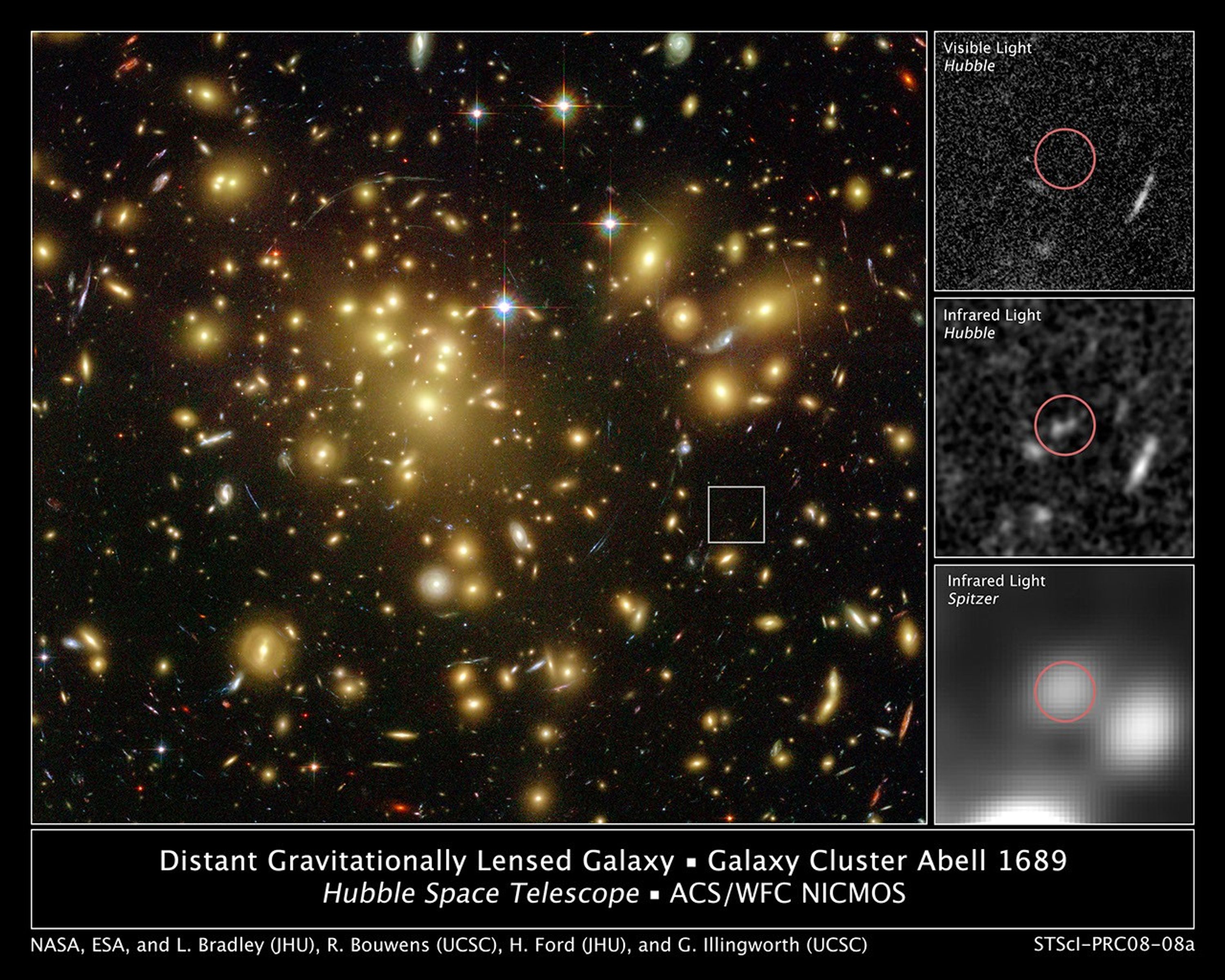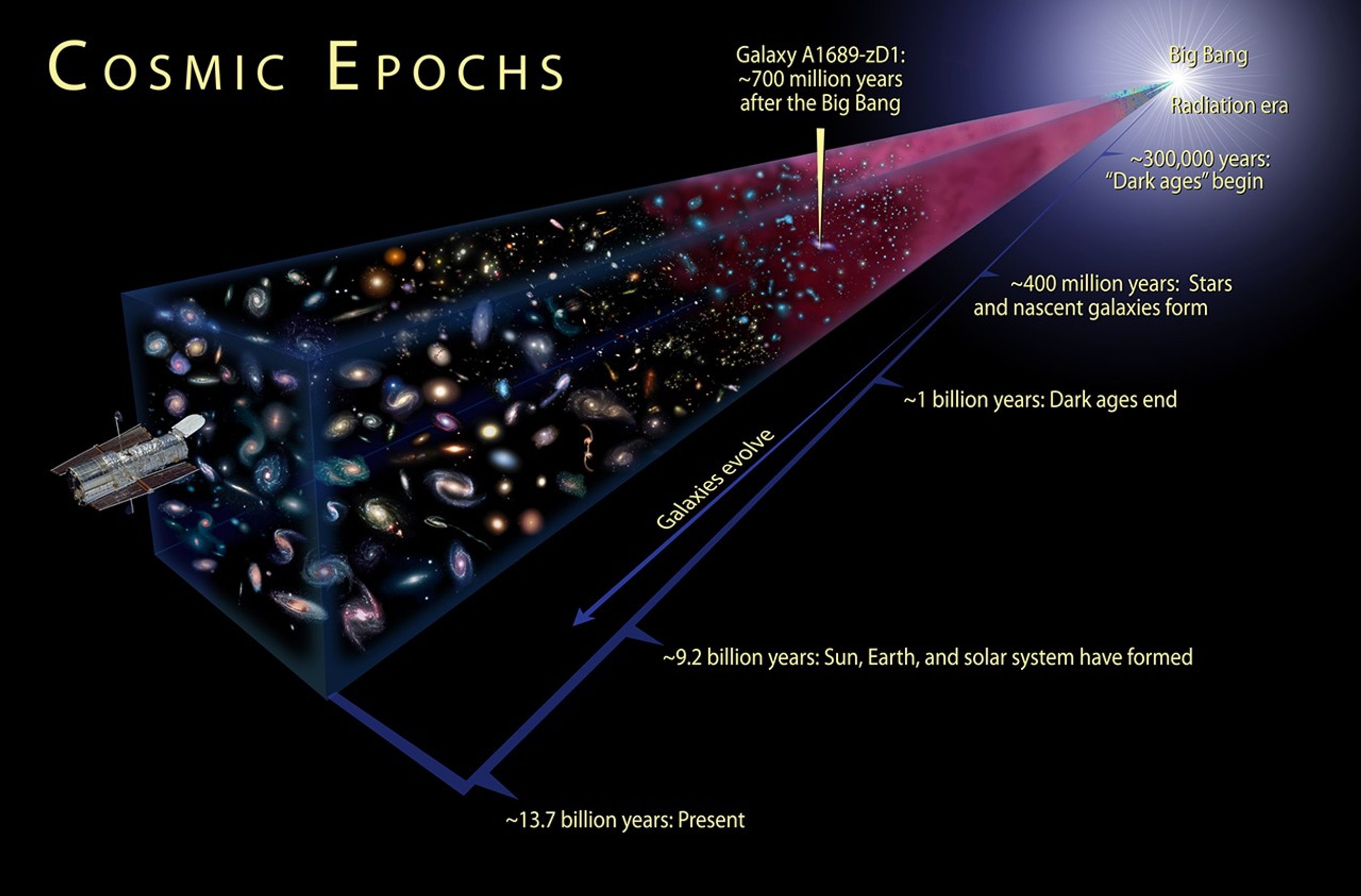1 min read
Galaxy Cluster Abell 1689

About the Object
- R.A. PositionR.A. PositionRight ascension – analogous to longitude – is one component of an object's position.13h 11m 34.19s
- Dec. PositionDec. PositionDeclination – analogous to latitude – is one component of an object's position.-1° 21' 56.0"
- ConstellationConstellationOne of 88 recognized regions of the celestial sphere in which the object appears.Virgo
- DistanceDistanceThe physical distance from Earth to the astronomical object. Distances within our solar system are usually measured in Astronomical Units (AU). Distances between stars are usually measured in light-years. Interstellar distances can also be measured in parsecs.The distance to the lensing cluster is 2.2 billion light-years (675 megaparsecs).
About the Data
- Data DescriptionData DescriptionProposal: A description of the observations, their scientific justification, and the links to the data available in the science archive.
Science Team: The astronomers who planned the observations and analyzed the data. "PI" refers to the Principal Investigator.The ACS data used in this study was from HST Proposal: 9289. The NICMOS data used in this study was from HST Proposals: 10150 and 10996. The archival data used in this study was from Spitzer proposal 20439. Science Team: L. Bradley (The Johns Hopkins University), R. Bouwens (University of California - Santa Cruz), H. Ford (The Johns Hopkins University), G. Illingworth (University of California - Santa Cruz), M. Jee (University of California - Davis), N. Benítez (Instituto de Matemáticas y Física Fundamental), T. Broadhurst (Tel Aviv University), M. Franx (Leiden Observatory), B. Frye (Dublin City University), L. Infante (Pontificia Universidad Católica), V. Motta (Universidad de Valparaíso), P. Rosati (European Southern Observatory), R. White (Space Telescope Science Institute), and W. Zheng (The Johns Hopkins University). - InstrumentInstrumentThe science instrument used to produce the data.HST>ACS/WFC
- Exposure DatesExposure DatesThe date(s) that the telescope made its observations and the total exposure time.June 12-21, 2006, Exposure Time: 13.2 hours
- FiltersFiltersThe camera filters that were used in the science observations.F475W (g), F625W (r), F775W (i), and F850LP (z)
- Object NameObject NameA name or catalog number that astronomers use to identify an astronomical object.Abell 1689
- Object DescriptionObject DescriptionThe type of astronomical object.Galaxy Cluster
- Release DateFebruary 12, 2008
- Science ReleaseAstronomers Uncover One of the Youngest and Brightest Galaxies in the Early Universe
- Credit

The color image of Abell 1689 is a composite of separate exposures made by the ACS instrument on the Hubble Space Telescope. Three filters were used to sample broad wavelength ranges. The color results from assigning different hues (colors) to each monochromatic image. In this case, the assigned colors are: Blue: F475W (g) Green: F625W (r) Red: F850LP (z)

Related Images & Videos

Astronomers Find One of the Youngest and Brightest Galaxies in the Early Universe
A massive cluster of yellowish galaxies is seemingly caught in a spider web of eerily distorted background galaxies in the left-hand image, taken with the Advanced Camera for Surveys (ACS) aboard NASA's Hubble Space Telescope. The gravity of the cluster's trillion stars acts as...

A Young Galaxy Brimming with Star Birth
This is an artist's impression of an embryonic galaxy brimming with star birth in the early universe, less than a billion years after the Big Bang. The galaxy is still forming and looks nothing like the majestic spiral and elliptical galaxies that are neighbors of our Milky Way...
Share
Details
Claire Andreoli
NASA’s Goddard Space Flight Center
Greenbelt, Maryland
claire.andreoli@nasa.gov
































